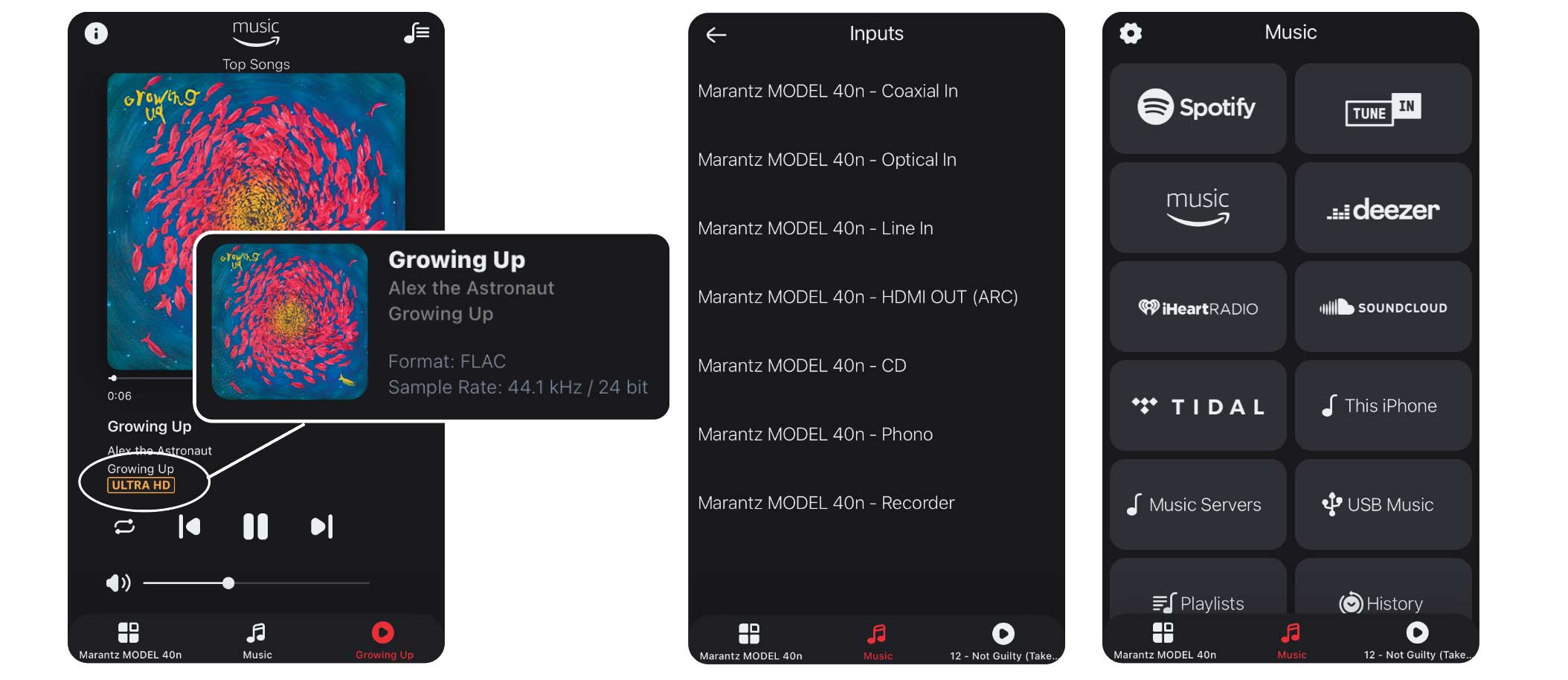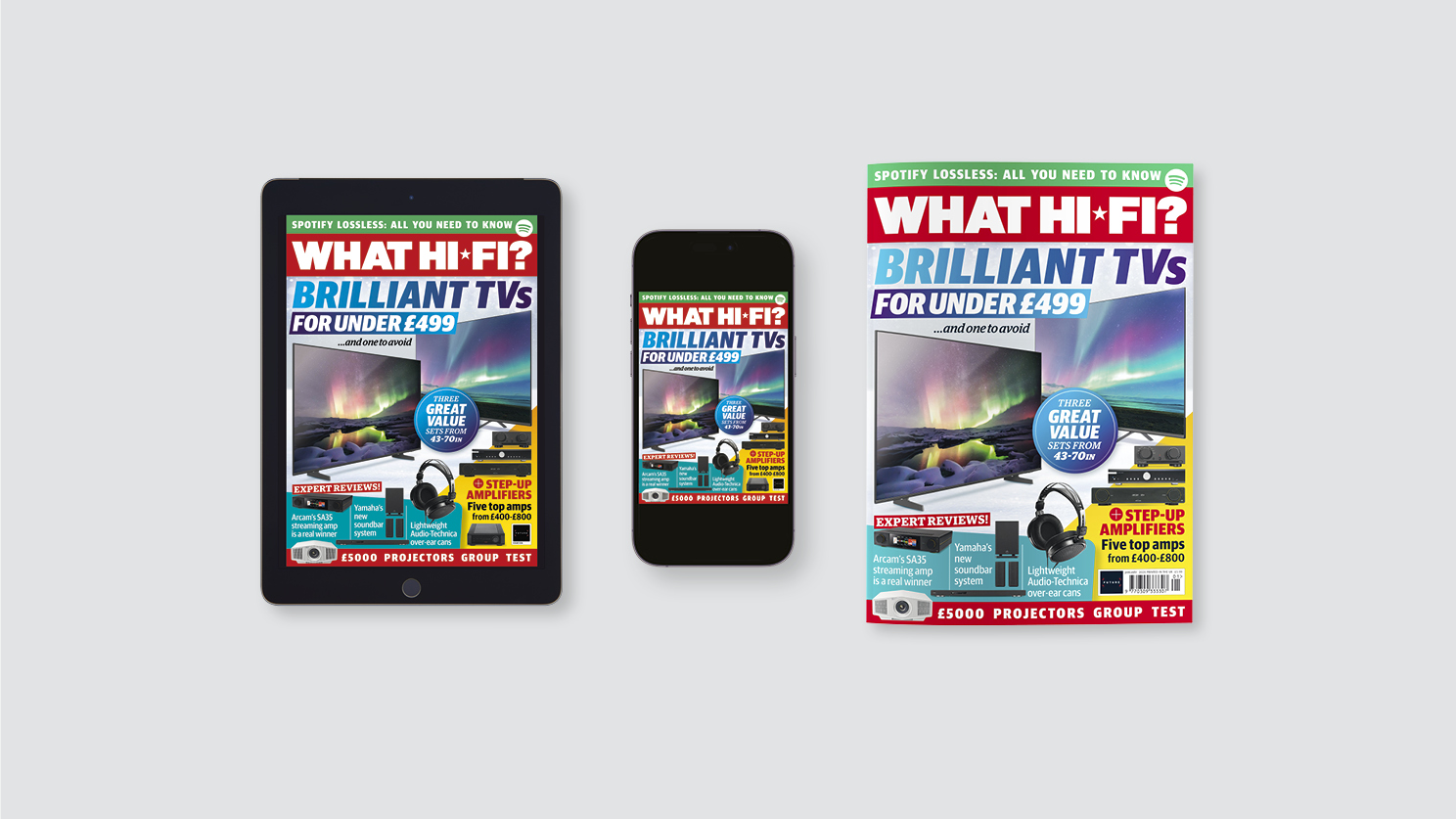Sound+Image Verdict
Marantz's Model 40n will reassure those who wonder whether Marantz is losing its identity among Masimo's Sound United brands. It delivers exactly what Marantz has long done best, usefully augmented by HEOS streaming.
Pros
- +
Traditional Marantz power
- +
HDMI ARC for TV sound as well as music
- +
HEOS streaming/multiroom built in
- +
Quite the looker!
Cons
- -
Minor artifacts under pressure
- -
Remote assumes full Marantz system
- -
Bluetooth limited to SBC codec
Why you can trust What Hi-Fi?
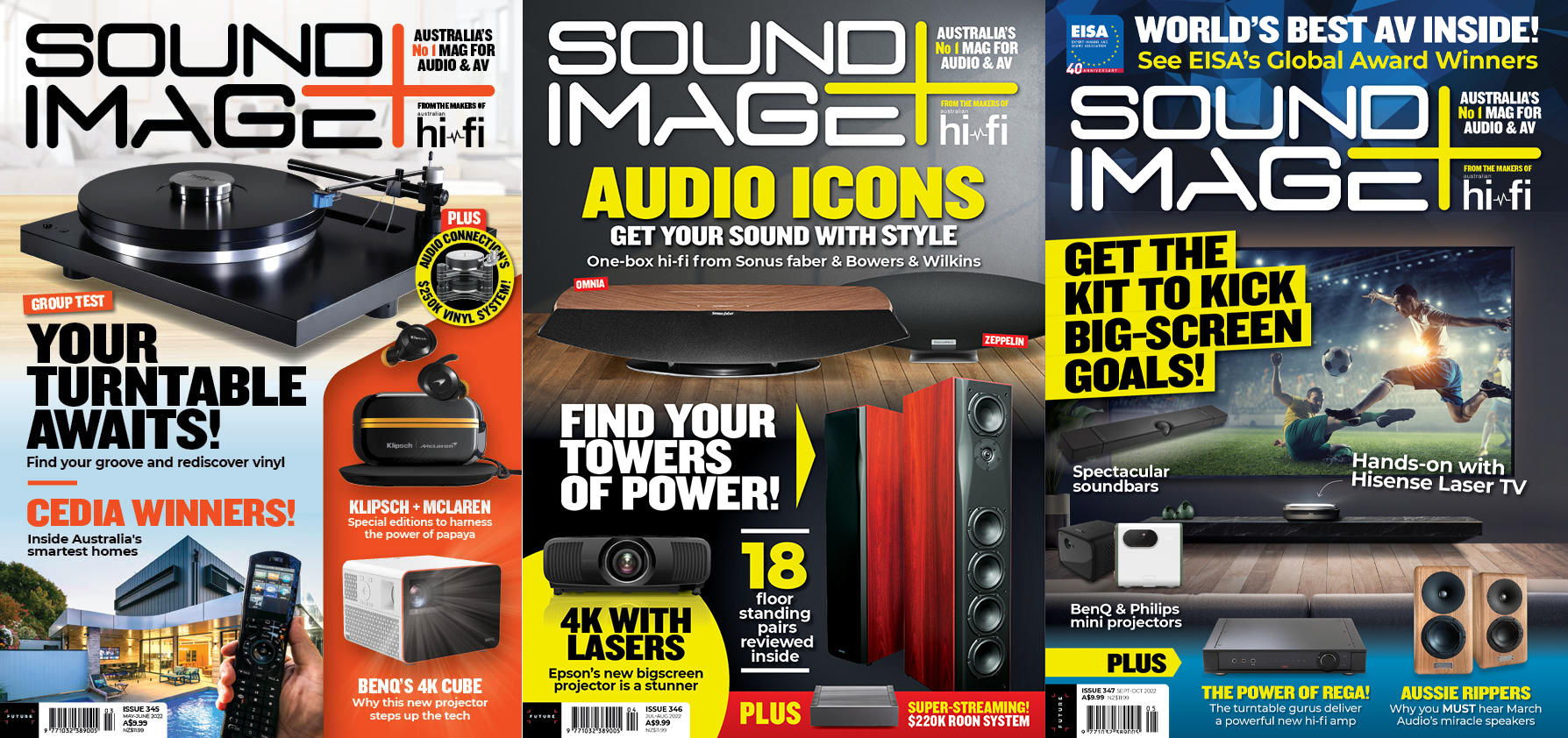
This review originally appeared in Sound+Image magazine, Australian sister publication to What Hi-Fi?. Click here for more information on Sound+Image, including digital editions and details on how you can subscribe. Read What Hi-Fi?'s global, star-rated Marantz Model 40n review.
The president of Marantz and Classé, Joel Sietsema, said something odd about the Model 40n at its launch.
“I strongly believe you don’t have to be an audiophile to enjoy rich, warm sound,” he said, seemingly indicating that this is not so much an audiophile product as one to please the masses. He says they’ve balanced the 40n’s sound against “added simplicity, gorgeous design, modern upgrades, and power.”
Yet at $4499, the Model 40n is clearly not exactly mass-market. So we suspect Sietsema is more comparing the design goals of the 40n directly to those of the recent and still current Marantz Model 30. The Model 30 is supposedly a higher-level Marantz amplifier, although it is not wildly higher in price – £700 more in the UK but just $500 more in the US or Australia – and it looks near-identical, having been first off the line with this new and unusual Marantz aesthetic that again shines from the etched casework of the Model 40n.
But where the Model 30 offers no digital inputs at all, no networking and no internal DAC, the newer Model 40n is fully loaded in that regard. It has digital inputs, it networks, and it carries the streaming and multiroom HEOS platform, bringing app control and streaming services straight to the amplifier.
Hence it joins the ranks of thoroughly modern all-in-one smart and streaming amplifiers. There is a matching CD player available, but if you’re all about the streaming, then the Marantz Model 40n could be your genuine just-add-speakers solution.

Build & facilities

Quoted power: 2 x 70W into 8 ohms (both channels, 20Hz–20kHz, THD 0.02%); 100W into four ohms.
Frequency response: 5Hz–100kHz ±3dB
Inputs: 3 x line-level analogue, 1 x power amp (bypass), moving-magnet phono, optical digital, coaxial digital, USB-A, HDMI ARC, Ethernet, Wi-Fi, remote in, Bluetooth (SBC only), HEOS streaming
Outputs: line-level out, subwoofer pre-out, speakers out, remote out
Dimensions (whd): 443 x 170 (194 with antennas up) x 432mm (including knobs & binding posts)
Weight: 16.7kg
Sietsema’s comment about audiophiles is off-kilter in another regard where comparison with that Model 30 is again instructive.
The 30’s input section might be considered more audiophile, in being pure analogue with no digital inputs. But its power section uses Hypex Ncore amplification modules. Well-regarded as those are, there are plenty of audiophiles who remain allergic to Class-D amplification, and they will immediately favour the Model 40n’s choice of grunt – the company’s well-established and highly regarded Class-AB HDAM modules.
The latest hi-fi, home cinema and tech news, reviews, buying advice and deals, direct to your inbox.
Especially so as those modules have here been revised and upgraded for the Model 40n, using four output devices per channel, paralleled to provide still more grip when presented with lower impedances than might be indicated by the headline specs of 70W per channel into eight ohms and 100W into four. Supported by a larger double-shielded toroidal power supply transformer, heavy copper bus bars and minimal power pathways, the 40n’s design aims to lower internal impedance and deliver high instant current capability. That all sounds pretty 'trad. audiophile' to us.
The connections, however, are thoroughly 21st-century, if not particularly profuse on the digital side, with just one each of optical and coaxial digital, though adding a useful HDMI ARC socket, thereby making the Marantz a fit for sound systems that are to combine music playback and TV sound.
It lacks USB-B for a direct computer connection, though, so if you have a file-based music collection you have a choice of using the UPnP network playback of HEOS, which plays up to 24-bit/192kHz PCM and DSD up to 5.6MHz, or perhaps AirPlaying it across from a computer (Roon could do this, if you subscribe to it), or of putting it all on a big hard-drive and plugging it into the USB-A slot on the rear, which also provides charging abilities. None of these is really an optimal way to play a large collection, so we connected our Mac Mini music machine using a standalone DAC to convert USB-B to SPDIF, and then on to the Model 40n’s coaxial input. This way we could play anything direct from the computer.
The analogue connections are better stocked, with three gold-plated line-level inputs plus a separated phono input and earth pin for a turntable with a moving-magnet input. There’s also a ‘power amp in’, which bypasses the 40n’s volume control, this being useful (if slightly hazardous) for any component which has its own volume control – such as using the 40n for the front channels of a surround system under the control of an upstream AV receiver, or even for an analogue input from an older TV, under the control of your TV remote’s volume. Just make sure those connected devices never accidentally deliver a full output, or the Marantz will do the same.
We like the output provision too. There’s a fixed level ‘record out’ (more useful than a variable pre-out), and a single subwoofer pre-out for which you can adjust the crossover point in 20Hz steps from 40Hz to 120Hz.
Finally there are full-size RCA remote in/outs, two antenna sockets for the provided dual-band Wi-Fi/Bluetooth antennas which extend slightly above the height of the unit, and an Ethernet socket for wired network access, which we gave it.
The Bluetooth spec is disappointingly limited to the most basic SBC codec, with not even AAC available, so we’d advise avoiding this unless convenience trumps your desire for quality.
HEOS streaming & control
Many readers will already know HEOS, one of the earliest streaming and multiroom platforms to emerge into the space originally defined by Sonos. It allows the 40n to do two things: stream from music services under the control of the HEOS app, and to share those and all the amp’s inputs with any other HEOS-equipped products in the home, which might be a little speaker in the bedroom, a soundbar in another room, or an eight-channel HEOS custom installation unit driving music through the whole home.
The HEOS directly accesses Spotify, Tidal, Amazon Music and Deezer, along with iHeartRadio, SoundCloud and TuneIn internet radio. That’ll do many users fine, though it leaves out a few key players, notably Apple Music, Mixcloud and Qobuz, which could be accessed on another device and sent to the Model 40n via UPnP (using Jriver on a PC, say), or using AirPlay 2 or Bluetooth. Or even, with smart TVs becoming media hubs in their own right, down HDMI from your TV or devices connected to it.
The HEOS interface is as clear and simple to use as the day it was launched (with Australian roots and much of its development done in Sydney). Three buttons at the bottom move you quickly between ‘Rooms’ for multiroom operation, ‘Music’ to select your input or streaming service, and ‘Now Playing’ where you can enjoy artwork as well as having transport and playlist controls at the tip of your finger.
If you don’t want even to lift a finger, you can try voice control from Google or Alexa devices, or Siri via AirPlay.
Since you have the HEOS control option, Marantz has gone with a remote control that is comprehensive rather than minimalist. It has direct access to all inputs (rather than the input shuttles which many smart amps force you to use), along with menu and set-up buttons, and finally volume and mute buttons which are in just the right place for a left-hander, if not particularly differentiated for ease of location.
The remote also offers all the buttons required to operate a CD player (the most likely candidate being the series-matching CD 60 (£850 / $999 / AU$1749), including an ‘Info’ button which does nothing for the amp but interestingly proved to toggle the power on a nearby Dyson Hot/Cold Fan. There’s handy.
All these extra buttons on the remote control complicate things for those not using a CD player, most particularly yielding the great curse of the combined system remote – twin power buttons up top to confound you for ever more. Normally we’d say the best solution is to do like us, and never turn it off. But given power prices today, perhaps not.
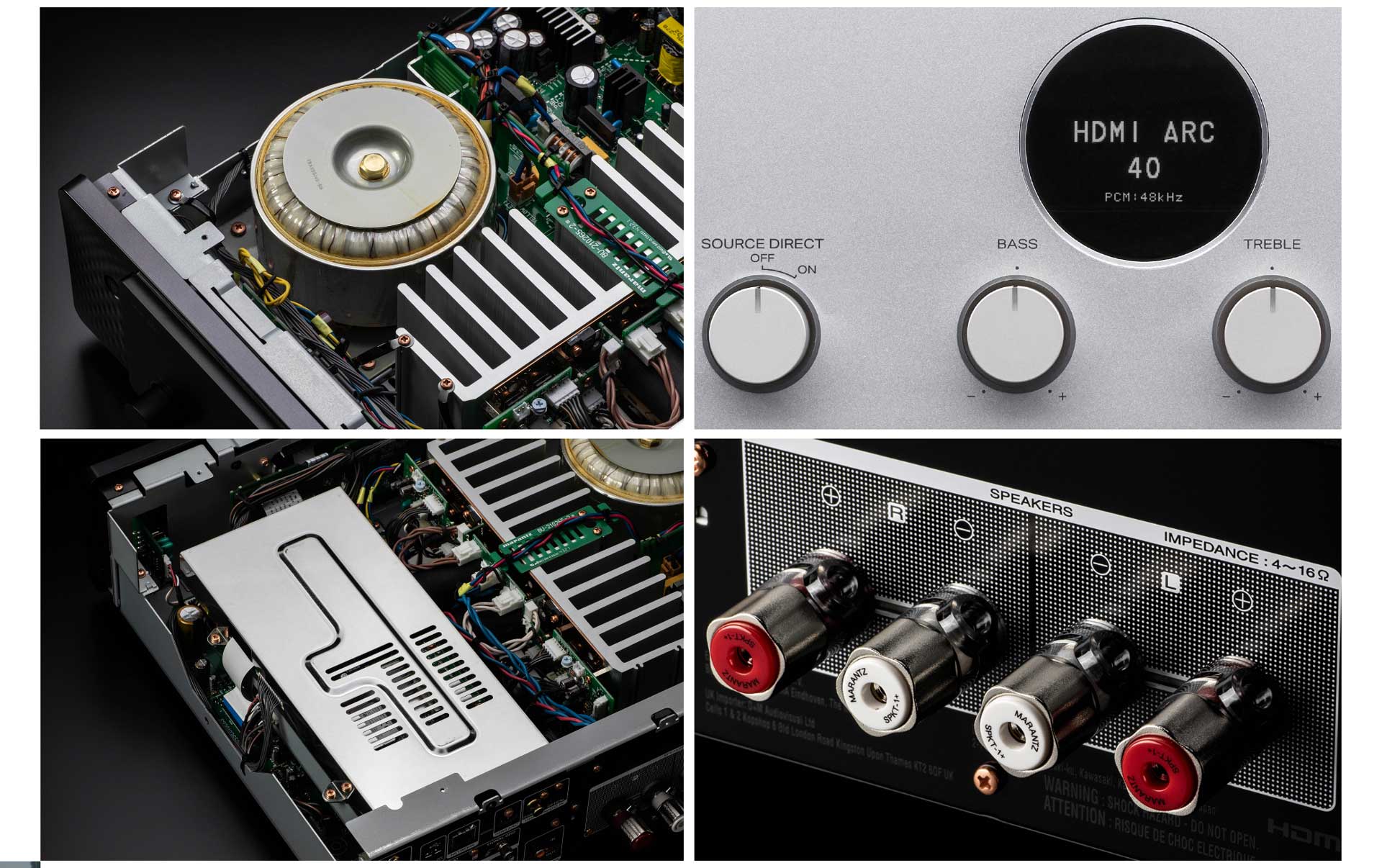
Performance & listening sessions
Unboxing the 40n, it’s clear this is a substantial amplifier with high build quality. It weighs 17kg, and the ‘lid-off’ images show why: besides its large toroid there’s a big chunk of solid metal finning running almost the full depth of the chassis for heat-sinking.
At the front of the steel chassis the flat panel section itself seemed to be a thick plastic sheet protruding forward of the scooped-out aluminium frontage etched with a receding spherical grid pattern (somewhat reminiscent of the The Who’s ‘Tommy’ LP cover in 1969). If you usually buy black rather than silver/gold, this might be a time to reconsider, as our black sample seemed to gather dust like it was electrostatically charged; keep your fingers away and a cloth nearby!
The traditional (but annoyingly small) central port-hole display is dead centre, showing (if you can peer across the room at its small lettering) input and volume, which by default climbs from zero upwards, rather than offering negative dBs. The aluminium knobbery is nicely symmetrical, with larger input and volume controls at either end, and three of the four smaller knobs adjusting old-school treble, bass and balance controls. The left-hand small knob was used on the Model 30 to switch the phono stage from moving magnet to moving coil, but as that’s not an option here it’s been repurposed to select ‘Source Direct’, a good thing. As with the power button, we left this permanently on.
Round the back the connections are high quality, including Marantz’s massive SPKT-1+ binding posts for the speaker connections (see above), these terminals made of dense brass with a thick silver plating, each with a north-east facing guide hole for easy connection and best possible contact for bare-wire speaker cables, while a pair of thin-nosed pliers is required to yank the plastic stops from the holes into which our banana-terminated cables were inserted.
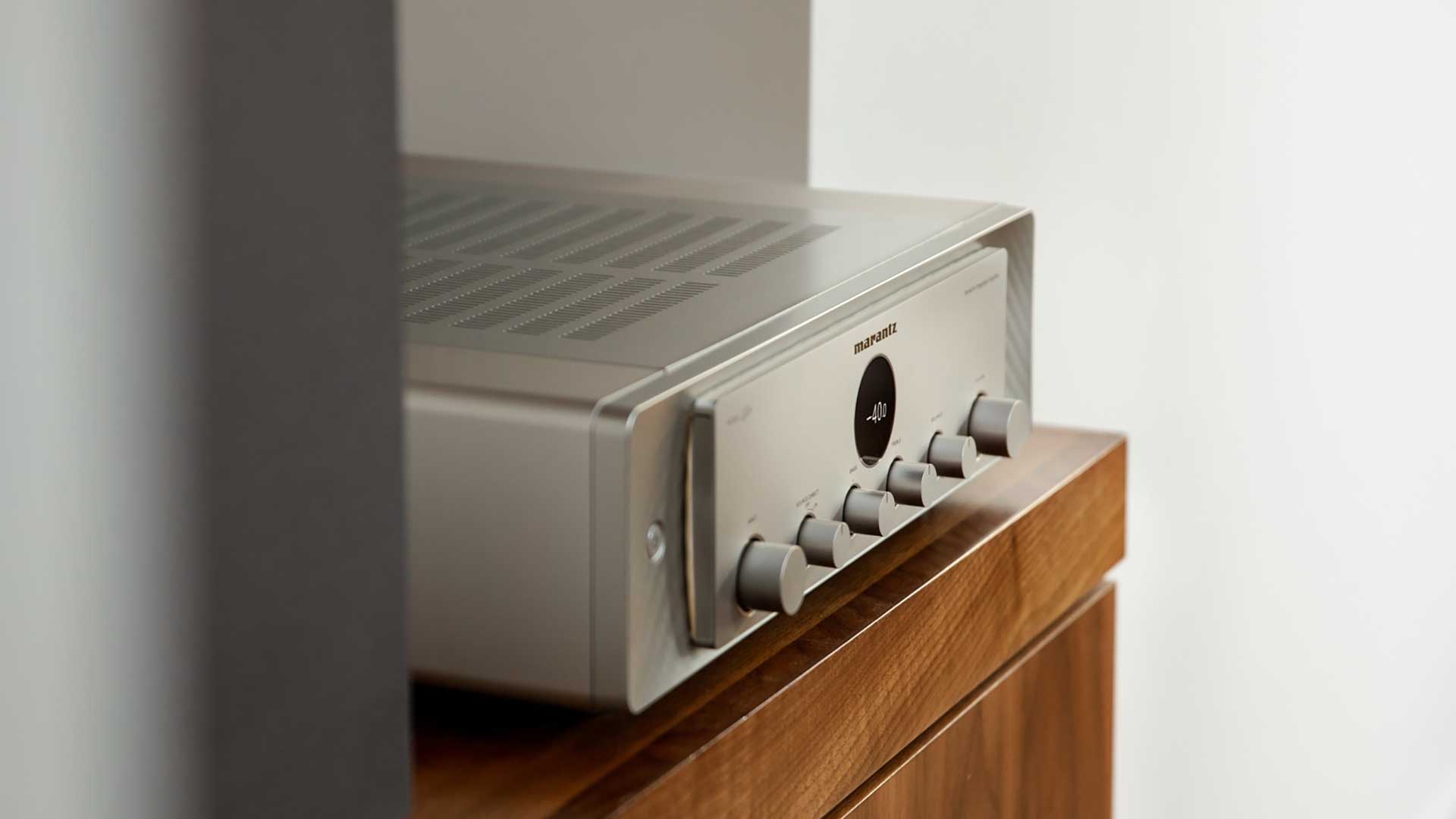
In addition to our TV, the coaxial digital connection from computer, HEOS, networked music et al, we plugged up our Thorens turntable, and began by spinning some vinyl. We were immediately impressed by a punchy and tight presentation of The Police’s ‘Ghost in the Machine’.
On Too Much Information you can hear the influence of Hugh Padgham in the production’s ‘Abacab’-like clarity, the punctuating horns and the razor-tight kick drum. There was a lovely warmth to its presentation, so much so that we decided to run the digital album at the same time (from the 'Complete Recordings' box set) and switch between vinyl and digital sources, subject to the slight delay of the 40n’s switching relays. The digital version emerged even tighter but notably peakier, slightly irritatingly so, and there was no competition as to which we’d prefer: the vinyl’s version poured out far more believably and more involvingly, the kick drum here full and punchy as well as merely tight, and Copland’s cymbal work shimmering and shining rather than biting at the ears.
Such edge was not, thankfully, a characteristic of the amp’s digital presentation in general. From Amazon HD Music we streamed Alex the Astronaut’s Growing Up, which arrived as a 24-bit/44.1kHz FLAC (which Amazon announced enthusiastically as ULTRA HD). The opening was impressively open and rich and detailed, but this is a track that builds to a climax, and things got a little thickened by the end. Do we blame the amp or the stream? We played the same track direct from computer, also a 24/44.1 track, and it was fine – the mix of the end section is clearly pushed a little too far in density, but there wasn’t the confusion delivered by the stream. So we blame Amazon for this (and for so much more). It’s another lesson that streams are great, but even HD streams can be beaten off by locally-stored (and owned) music.
Such minor artifacts under pressure may seem small beans, but they directly affect how loud you can play music. Confusion requires that you notch things down; clarity allows you to nudge it up. You can guess which we prefer.
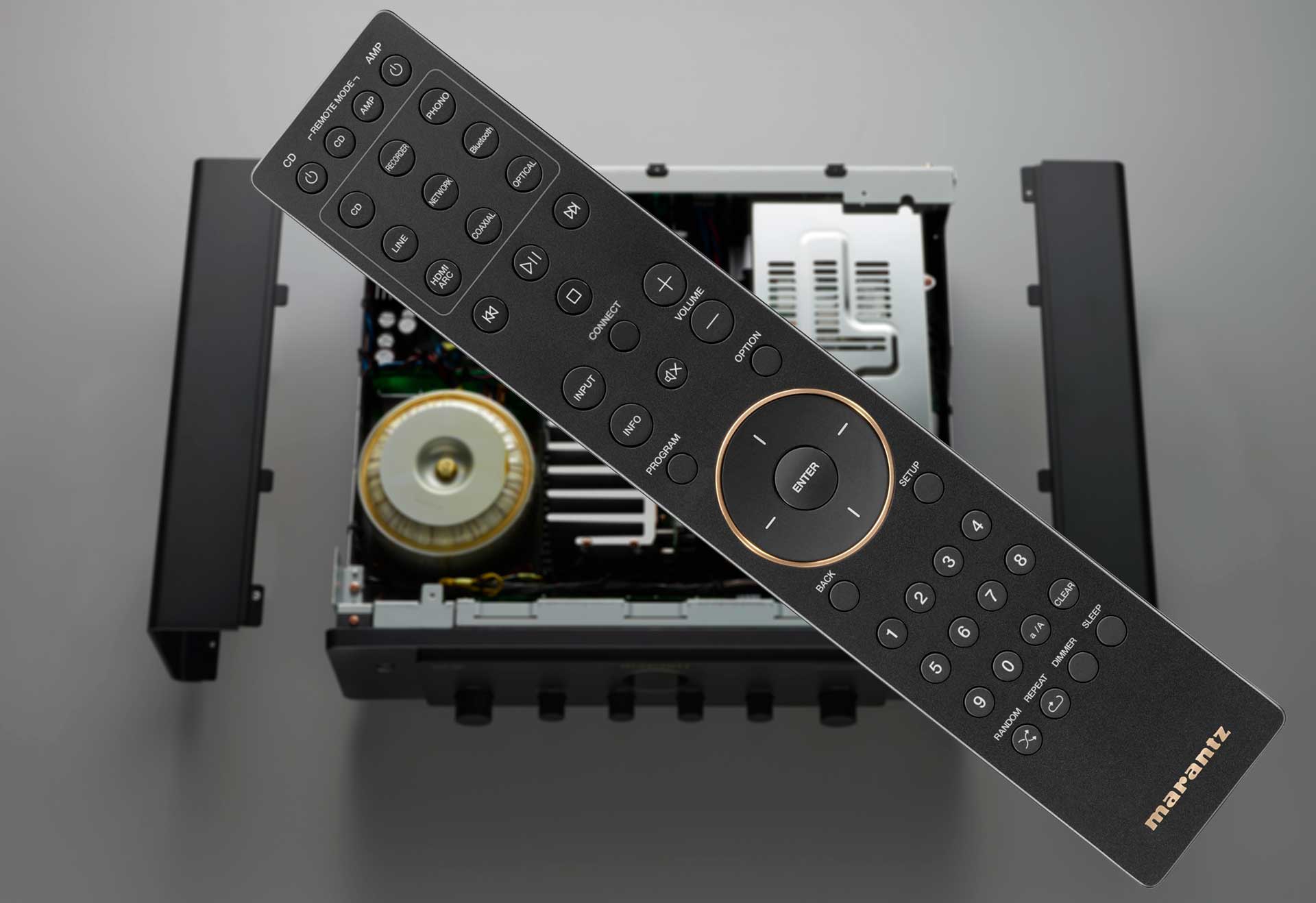
Talking of locally-stored music, we attached a hard drive of high-res music and kicked off a DSD 2.8MHz file of Diana Krall and Michael Bublé’s take on Alone Again (Naturally). It takes a bad amp indeed to cock this fine recording up, and it sounded suitably luscious from the Model 40n, hanging on every breathy articulation, and soaring suitably high with the harmonies.
Dynamics were confirmed with Chick Corea’s Australia concerto, with lively rim shots punctuating this joyfully eclectic piece, and an impressively deep and wide soundstage, especially during Hans Glawischnig’s extended acoustic bass solo, which is surrounded by swirling cymbal work.
We finished up with a few days of TV and movie listening through the amp. Suffice to say that the Marantz and a good pair of speakers will put pretty much any soundbar to shame with its powerful and accurate hi-fi level of delivery. You want punchy effects, dialogue clarity, real dynamic impact? Then we recommend a hi-fi system, not a soundbar.

Verdict
There has been a quandary lurking in the background of Marantz products for a while. Ever since Denon and Marantz came together in 2002 under the D+M banner, there has been development convergence between the two brands: chassis became similar, back panels began matching up, the shared use of HEOS made their streaming sections and app control entirely identical.
This has continued since D+M Group was acquired by Sound United in 2017, with further collusion between the wider brands: we’ve recently seen near-identical Denon and Polk soundbars, for example, while it’s tempting to interpret the latest teeny displays on Denon amplifiers as providing still easier circuit dopplegangery to match the tiny displays in Marantz’s characteristic central ‘port-hole’ display. The enforced departure of Marantz sonic guru Ken Ishiwata in 2019 further closed a golden age of Marantz that might be considered to have started 40 years earlier with the divergence from Philips at the dawn of CD, or shortly afterwards with Ishiwata’s first ‘special edition’ products.
And now the whole of Sound United has itself been bought by a global medical technology company called Masimo, in a takeover that was finalised in April this year. We’ve heard little more since the arrival of these new owners of Sound United brands, and nothing on how the new ownership may affect development or influence future cost-saving convergence between brands. Does Marantz still have a unique character, or is it now just another brand rolling the boxes off one of Masimo’s many conveyor belts?
We think the Marantz 40n sheds a light into that darkness. It combines traditional Marantz amplification technology with a full raft of digital inputs and the streaming and multiroom facilities of HEOS to create a versatile ‘just-add-speakers’ solution for those who are now streamers rather than (or in addition to) disc spinners.
And more to the point it does so with a panache and a rich powerful sound that feels true to traditional Marantz values. Long-term fans of the brand can buy with confidence.

Jez is the Editor of Sound+Image magazine, having inhabited that role since 2006, more or less a lustrum after departing his UK homeland to adopt an additional nationality under the more favourable climes and skies of Australia. Prior to his desertion he was Editor of the UK's Stuff magazine, and before that Editor of What Hi-Fi? magazine, and before that of the erstwhile Audiophile magazine and of Electronics Today International. He makes music as well as enjoying it, is alarmingly wedded to the notion that Led Zeppelin remains the highest point of rock'n'roll yet attained, though remains willing to assess modern pretenders. He lives in a modest shack on Sydney's Northern Beaches with his Canadian wife Deanna, a rescue greyhound called Jewels, and an assortment of changing wildlife under care. If you're seeking his articles by clicking this profile, you'll see far more of them by switching to the Australian version of WHF.

